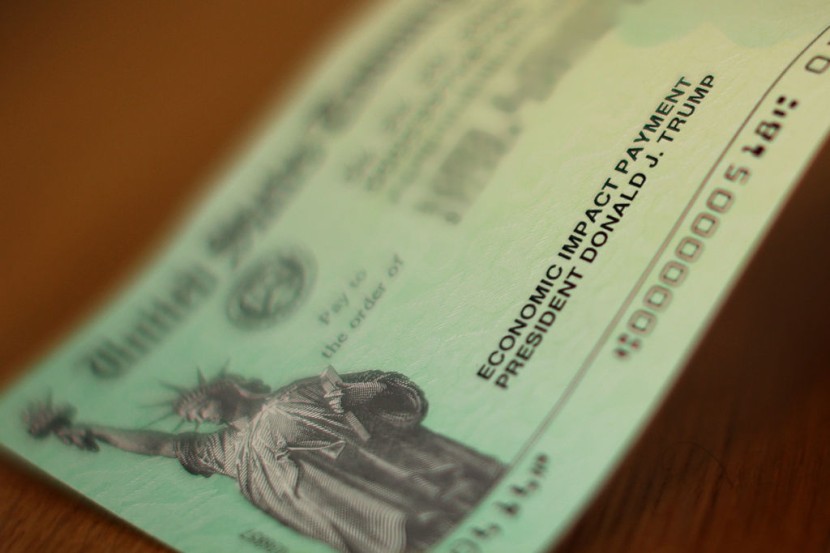
The Delta variant wrecked Americans' summer, just when the government had planned for the economy to surge back and elevate suffering people into jobs and financial stability.
The decline now presents uncertainty for millions of people because the top COVID-19 relief measures expired recently, at a time when the country is still registering 100,000 new coronavirus infections per day, according to statistics from the Centers for Disease Control and Prevention.
With interest in Washington having peaked, a fourth pandemic stimulus check is unlikely, although some help is still being provided to restricted groups of individuals. There are other methods for US households struggling to pay expenses and manage with debt to help make up for lost aid, as per Money Wise.
These COVID relief programs are set to expire
The $1.9 trillion pandemic government rescue plan approved in March is perhaps most remembered for the $1,400 stimulus checks - the third direct payment of the COVID-19 crisis - given to a sizable portion of the American population.
Several types of emergency help in that bundle have run out of time. Here are the programs that are coming to an end, along with their expiration dates:
Unemployment benefits
Anyone receiving unemployment benefits received a $300-per-week increase under President Joe Biden's American Rescue Plan. Those additional stimulus payments stopped on Labor Day, September 6. However, more than a dozen states shut off federal pandemic assistance early.
Two other programs were terminated on that day: unemployment benefits for gig workers and independent contractors during the crisis and an emergency extension that provided unemployed Americans with an additional 13 weeks of payments.
Health insurance
The government has covered 100 percent of the health insurance costs of laid-off workers who continue to have job-based coverage under the COBRA legislation. However, that benefit expired on September 30, and consumers may need to obtain new health insurance since COBRA coverage is costly.
Larger Child Tax Credit
Since July 15, the government has been sending monthly "family stimulus payments" to households with children as part of a one-year extension of the Child Tax Credit.
Depending on your income, the stimulus payments may amount up to $1,800 for each child under the age of six and $1,500 for children aged six to seventeen. However, the final payment is due on December 15. Democrats in Congress are attempting to preserve the bigger child credit.
Eviction protection
A ruling by the United States Supreme Court puts an early end to a countrywide eviction prohibition that was set to last until October 3. Many local governments continue to impose eviction moratoriums, although some of these restrictions are set to expire soon. According to census data, over 3 million renters believe eviction is "extremely" or "very" likely within the next two months.
Who can get a $3,000 stimulus payment?
In California, the government has begun distributing additional Golden State Stimulus check payments totaling $600. This would be distributed to homes with yearly earnings between $30,000 and $75,000, with those with children getting $500. These payments would undoubtedly be part of the $100 billion relief program, which Governor Gavin Newsom has said is the largest state tax rebate in the country's history.
By the end of August, 600,000 people had received their first round of stimulus payments. Another batch was distributed to the state's approximately 2 million residents earlier this month. According to state officials, the payments are sent every two weeks. At the same time, a few states, such as Michigan, have started making payouts of approximately $3,000 to teachers who worked in a school.
Tennessee and Georgia have also opted to distribute a $1,000 stimulus payment to administrators and teachers, with about $500 going to part-time instructors, as per Digital Market News.
Why is your stimulus check amount less than the average?
A recent Institute on Taxation and Economic Policy analysis showed the poorest 60% of earnings in the United States received an average of $3,450 in stimulus payments. Those earning less than $65,000 a year are included in the 60 percent of earners. The third stimulus check, enlarged child tax credit, and extended Earned Income Tax Credit are all included in this $3,450 amount.
If you are in the lowest 60% of the distribution yet received less than the average, you may be asking why. The first thing to remember is that the $3,450 number is an average, which means that some people would have received less and some would have received more.
As a result, you may fall into the first group. There are a few probable explanations for why you ended up in the first category.
The first possible explanation is that your annual income was above average. All of the stimulus packages included an income cap. This implies that individuals with greater incomes received less, while those with incomes over a particular threshold received nothing at all.
Per Value Walk, income might be the primary reason you received less stimulus money. For example, the Institute on Taxation and Economic Policy discovered that people earning between $113,300 and $247,400 received an average of $2,830 in stimulus money, while those earning between $247,400 and $601,700 received only $280.
Related Article: Fourth Stimulus Check: Can Rising Unemployment Claims Connect To More Payments?
@YouTube








